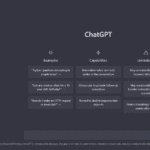Live chat routing assigns chats to the best-suited agent based on skills, tenure, availability, and other factors. By ensuring that each chat is routed to the right agent, businesses can provide a more efficient and effective customer service experience. In addition, it can help to reduce wait times and improve customer satisfaction. Live chat routing is an essential tool for businesses that rely on live chat as a critical component of their customer service strategy. Companies can use routing rules to ensure that each customer receives the best possible service.
How does live chat routing work
Live chat routing is a process used by businesses to distribute chat messages among customer service reps. The goal is to route chats to the best-suited representative so that they can resolve the issue as efficiently as possible.
- Customer initiates a chat: A customer initiates a live chat request through the company’s website or mobile app.
- Routing rules: The system uses pre-defined routing rules to determine which support agent should handle the chat based on factors such as customer questions, language, and previous interactions with the company.
- Agent assignment: The chat request is then assigned to the most suitable support agent based on their skills, availability, and workload.
- Chat session: The support agent and the customer engage in a live chat session, where the agent can answer questions and provide support in real-time.
- Chat history: The entire chat session is recorded and stored in the customer’s chat history, which can be used for future reference and to track the customer’s journey with the company.
- Resolution: Once the customer’s issue is resolved, the chat session ends and the customer is asked to rate the support experience. This feedback helps the company to improve its live chat service.
There are several ways to route chats, but the most common method is to use an algorithm that considers factors such as skillsets, load balancing, and the nature of the question. Artificial Intelligence algorithms can be used to analyze customer interactions in real-time and make routing decisions based on various factors, such as the customer’s language, question, previous interactions, and more. This helps to ensure that chats are routed to the most suitable support agent, improving response times and customer satisfaction.
Using live chat routing can have many benefits for businesses:
- It can help to improve customer satisfaction by ensuring that each chat is routed to the best-suited rep.
- It can improve efficiency by ensuring that each chat is routed to an available agent with the necessary skill set.
- It can help to reduce costs by making sure that each chat is routed to a rep who is available and likely to resolve the issue quickly.
The most common types of customer live chat routing:
- Skills-based routing: Skills-based routing directs chats to agents based on their specific areas of expertise. This type of routing helps ensure that customers receive support from an agent who has the knowledge and skills to handle their issues.
- Round-robin routing: Round-robin routing distributes chats evenly among agents in a cyclical order. This method helps to ensure that no single agent is overwhelmed with too many chats and helps to spread the workload evenly among all agents.
- Priority routing: Priority routing prioritizes chats based on factors such as the customer’s history or the urgency of their issue. For example, a high-priority chat from a VIP customer or a chat about a critical issue may be routed to an agent with a higher level of expertise or a dedicated priority support team.
- Language-based routing: Language-based routing matches chats with agents based on the customer’s preferred language. This type of routing helps to ensure that customers can communicate in their preferred language, improving their overall experience with the company.
- Time-based routing: Time-based routing directs chats to different agents or departments based on the time of day or week. For example, chats received outside of regular business hours may be routed to a different support team or an after-hours support agent.
- Geolocation-based routing: Geolocation-based routing routes chats based on the customer’s location. This type of routing ensures that customers receive support from an agent located in the same time zone, improving response times and reducing wait times.
- IVR routing: IVR (Interactive Voice Response) routing integrates voice recognition technology to direct chats to the most appropriate agent or department. For example, a customer may use voice commands to select the department they need to speak to, or the system may automatically route the chat based on the customer’s spoken request.
- Machine learning-based routing: Machine learning-based routing uses AI algorithms to analyze customer data in real-time and make routing decisions based on various factors, such as the customer’s history, language, questions, and more. This routing helps ensure that chats are routed to the most suitable support agent, improving response times and customer satisfaction.
Each type of routing method has its own benefits and limitations, and the best option for a business will depend on its specific requirements and customer service goals.
How to Set Up Custom Routing rules Based on Visitor Attributes
Custom routing allows you to set up advance conditions and custom rules based on visitor attributes like location, time of the day, and message text and accordingly route them to the most appropriate operators or groups. Most live chat providers can auto-assign incoming chats to the right groups and operators based on visitors’ history or keywords and the product they browse.

With features like auto-assignment of incoming chats and keyword-based chat routing, you can provide a more efficient and customized support experience for your visitors.
How do you set up live chat routing?
Setting up live chat routing on your website is a relatively simple process that can provide several benefits for your business. Here are the steps involved in setting up live chat routing on your website:
- 1. Choose a live chat software that offers routing capabilities. Many options are available, so be sure to select one that meets your specific needs.
- 2. Set up the chat software according to your preferences. This will likely involve selecting the routing method and configuring the rules for how chats are routed.
- 3. Train your agents on how to use the chat software and handle routed chats.
- 4. Monitor the performance of your live chat system regularly. This will help you to identify any issues and make necessary adjustments to improve the efficiency of your live chat operations.
Many customer live chat software solutions support chat routing. Some popular solutions that offer this feature include:
These solutions typically offer a range of routing options, including skills-based routing, round-robin routing, and priority routing. Each solution may have different capabilities and features, so it’s important to evaluate the specific requirements of your business and choose a solution that best meets those needs.
Live chat routing is an essential tool for businesses of all sizes. Using a platform that supports one, you can ensure that your customers can connect with a customer service representative as quickly and efficiently as possible. With the right platform in place, you can provide your customers with an excellent online experience that leads to more sales and happier customers.












